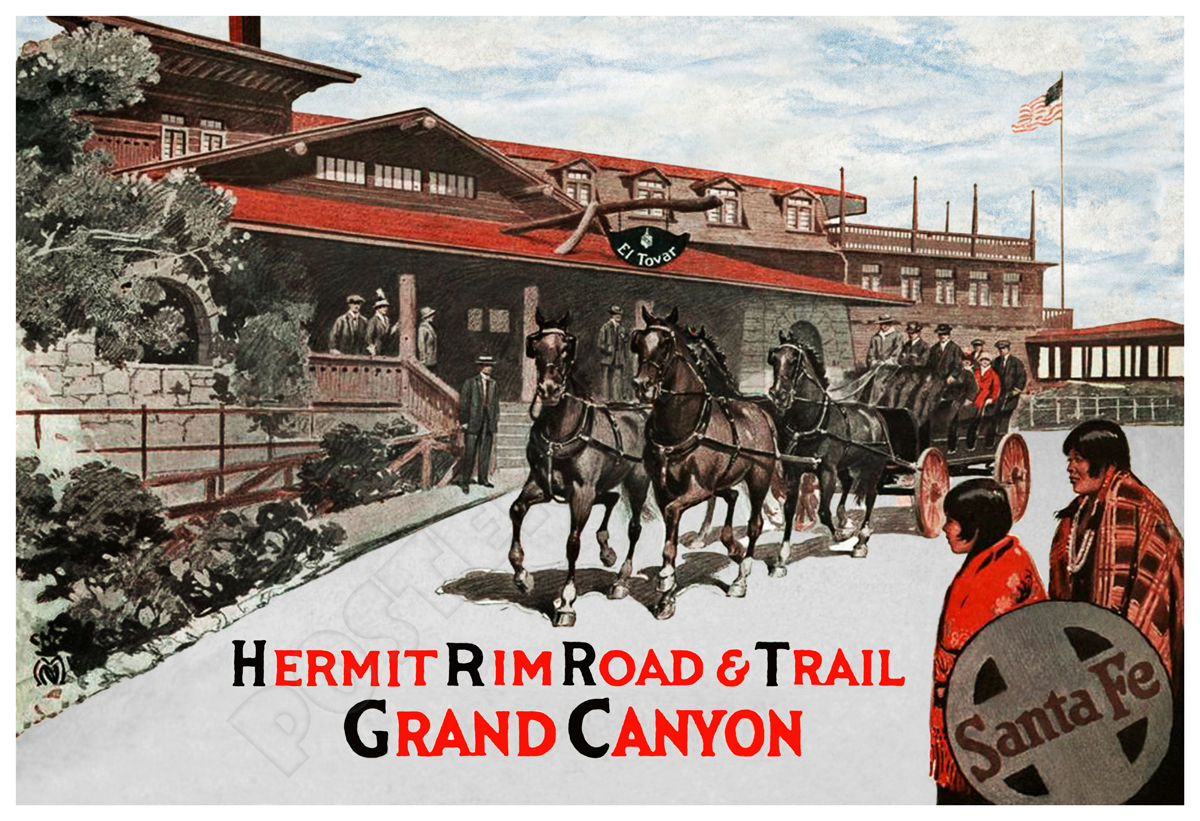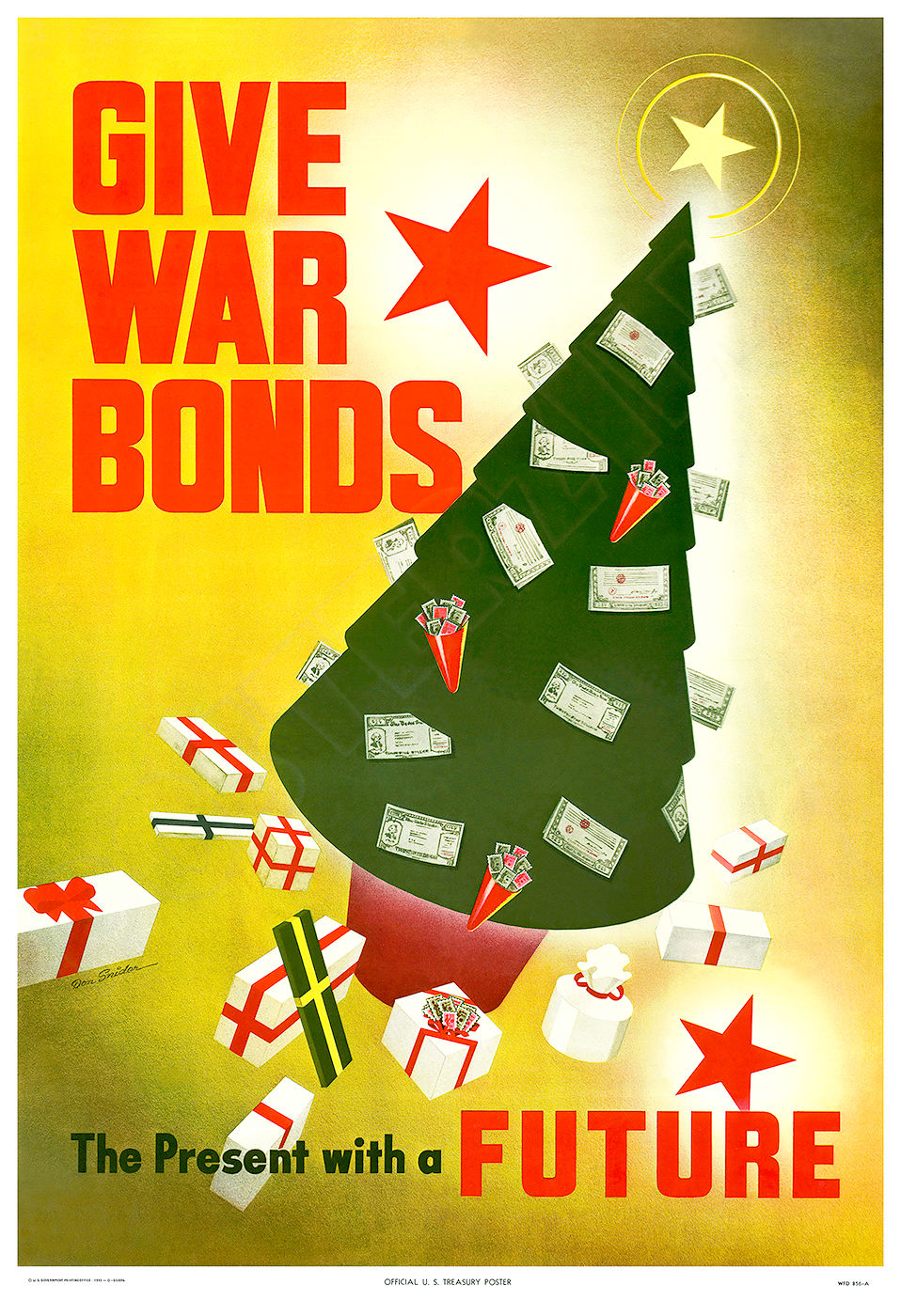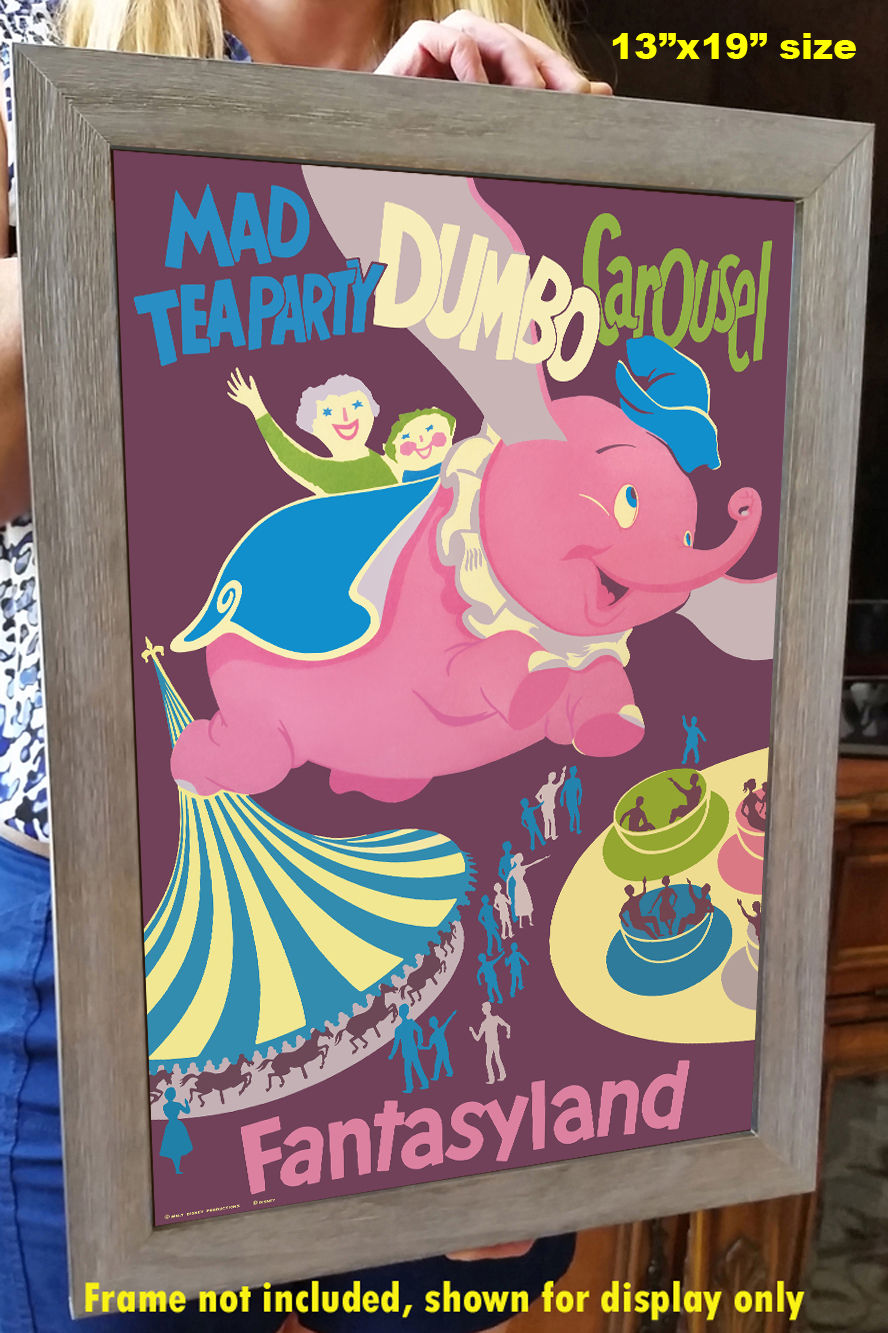This beautiful reproduction poster has been re-mastered from an original advertising brochure for the Santa Fe Railroad’s Grand Canyon Line, and the famous Fred Harvey El Tovar Hotel.
The vibrant colors and detail of this classic image have been painstakingly brought back to life to preserve a great piece of history.
The high-resolution image is printed on heavy archival photo paper, on a large-format, professional giclée process printer. The poster is shipped in a rigid cardboard tube, and is ready for framing.
The 13"x19" format is an excellent image size that looks great as a stand-alone piece of art, or as a grouped visual statement. These posters require no cutting, trimming, or custom framing, and a wide variety of these frames are readily available at your local craft or hobby retailer, and online.
A great vintage print for your home, shop, or business!
HISTORY OF THE EL TOVAR HOTEL
The El Tovar Hotel, also known simply as “El Tovar,” is a former Harvey House hotel situated directly on the south rim of the Grand Canyon in Arizona, United States.
The hotel was designed by Charles Whittlesey, Chief Architect for the Atchison, Topeka, and Santa Fe Railway and was opened in 1905 as one of a chain of hotels and restaurants owned and operated by the Fred Harvey Company in conjunction with the Santa Fe railway whose Grand Canyon Depot was 330 ft away. It is at the northern terminus of the Grand Canyon Railway, which was formerly a branch of the Santa Fe.
The hotel is one of only a handful of Harvey House facilities that are still in operation, and is an early example of the style that would evolve into National Park Service Rustic architecture. The Hotel is also featured in the 1983 film, National Lampoon's Vacation.
The hotel opened in 1905, before the Grand Canyon was a formally protected Federal park, following on the heels of President Theodore Roosevelt's 1903 visit to the canyon. During his visit Roosevelt said about the Grand Canyon:
I want to ask you to do one thing in connection with it in your own interest and in the interest of the country – to keep this great wonder of nature as it is now ...I hope you will not have a building of any kind, not a summer cottage, a hotel or anything else, to mar the wonderful grandeur, the sublimity, the great loveliness and beauty of the Canyon. Leave it as it is. You cannot improve upon it.
The hotel, which had been under design since 1902, was built the next year and opened in January 1905. The Grand Canyon Game Preserve was established by Roosevelt's executive order in 1906, expanding protections granted by President Benjamin Harrison in 1893. The Grand Canyon National Monument was proclaimed in 1908, and Grand Canyon National Park was finally established by Congress in 1919.
The Santa Fe Railway initially planned for a relatively small hotel, but increased the size in view of increasing traffic to the Grand Canyon. The site was an area of 20 acres granted by the U.S. Government for use as a train terminal. The design was carried out by the railroad's architect Charles Whittlesey, of Topeka, Kansas and was projected to cost $250,000 to build. Rejecting an initial plan to call it the "Bright Angel Tavern", the tradition of using Spanish names for Harvey hotels was continued for the new hotel. Since the name of the canyon's discoverer, García López de Cárdenas, was given to an existing Harvey Hotel, the hotel was named after Pedro de Tobar (or de Tovar), who had reported rumors of a large river in the area, inspiring the Cárdenas expedition.
The hotel was built as a "destination resort", providing a high level of comfort and luxury standing literally on the edge of the wilderness, 20 feet from the rim of the canyon. The El Tovar was one of the first such hotels in national parks, part of a trend in which railroads would build large hotels in newly-accessible scenic locations like Yellowstone and Glacier National Parks, stimulating tourist traffic, necessarily railborne, to those destinations. The railroads consciously employed architectural design in keeping with the image they wished to convey, a superficially rustic resort that provided a comfortable retreat.
Roosevelt returned to stay at the El Tovar in 1911, and again in 1913, writing a book about his 1913 trip.
top of page
$19.95Price
These are simply the best posters available! You will be thrilled with the image quality, vivid colors, fine paper, and unique subjects.
Our posters are sized for standard off-the-shelf frames, with no custom framing required, providing huge cost savings!
Related Products
bottom of page
































